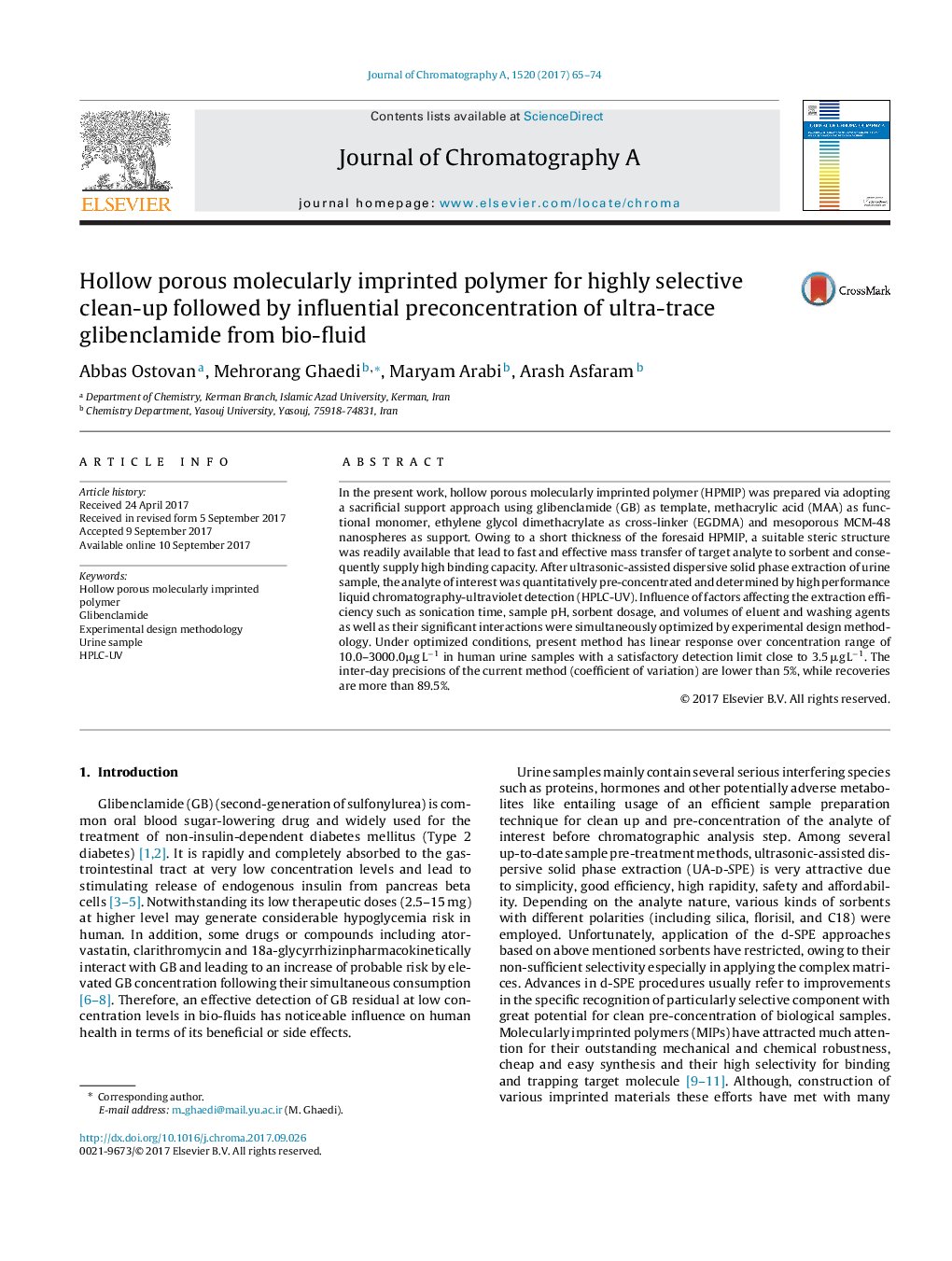| کد مقاله | کد نشریه | سال انتشار | مقاله انگلیسی | نسخه تمام متن |
|---|---|---|---|---|
| 5134856 | 1493406 | 2017 | 10 صفحه PDF | دانلود رایگان |

- HPMIP template with GB was firstly prepare and characterized.
- Adsorption equilibrium time has been shortened to 15Â min.
- HPMIP was used as sorbent for purification and extraction GB from urine.
In the present work, hollow porous molecularly imprinted polymer (HPMIP) was prepared via adopting a sacrificial support approach using glibenclamide (GB) as template, methacrylic acid (MAA) as functional monomer, ethylene glycol dimethacrylate as cross-linker (EGDMA) and mesoporous MCM-48 nanospheres as support. Owing to a short thickness of the foresaid HPMIP, a suitable steric structure was readily available that lead to fast and effective mass transfer of target analyte to sorbent and consequently supply high binding capacity. After ultrasonic-assisted dispersive solid phase extraction of urine sample, the analyte of interest was quantitatively pre-concentrated and determined by high performance liquid chromatography-ultraviolet detection (HPLC-UV). Influence of factors affecting the extraction efficiency such as sonication time, sample pH, sorbent dosage, and volumes of eluent and washing agents as well as their significant interactions were simultaneously optimized by experimental design methodology. Under optimized conditions, present method has linear response over concentration range of 10.0-3000.0μg Lâ1 in human urine samples with a satisfactory detection limit close to 3.5 μg Lâ1. The inter-day precisions of the current method (coefficient of variation) are lower than 5%, while recoveries are more than 89.5%.
Journal: Journal of Chromatography A - Volume 1520, 20 October 2017, Pages 65-74